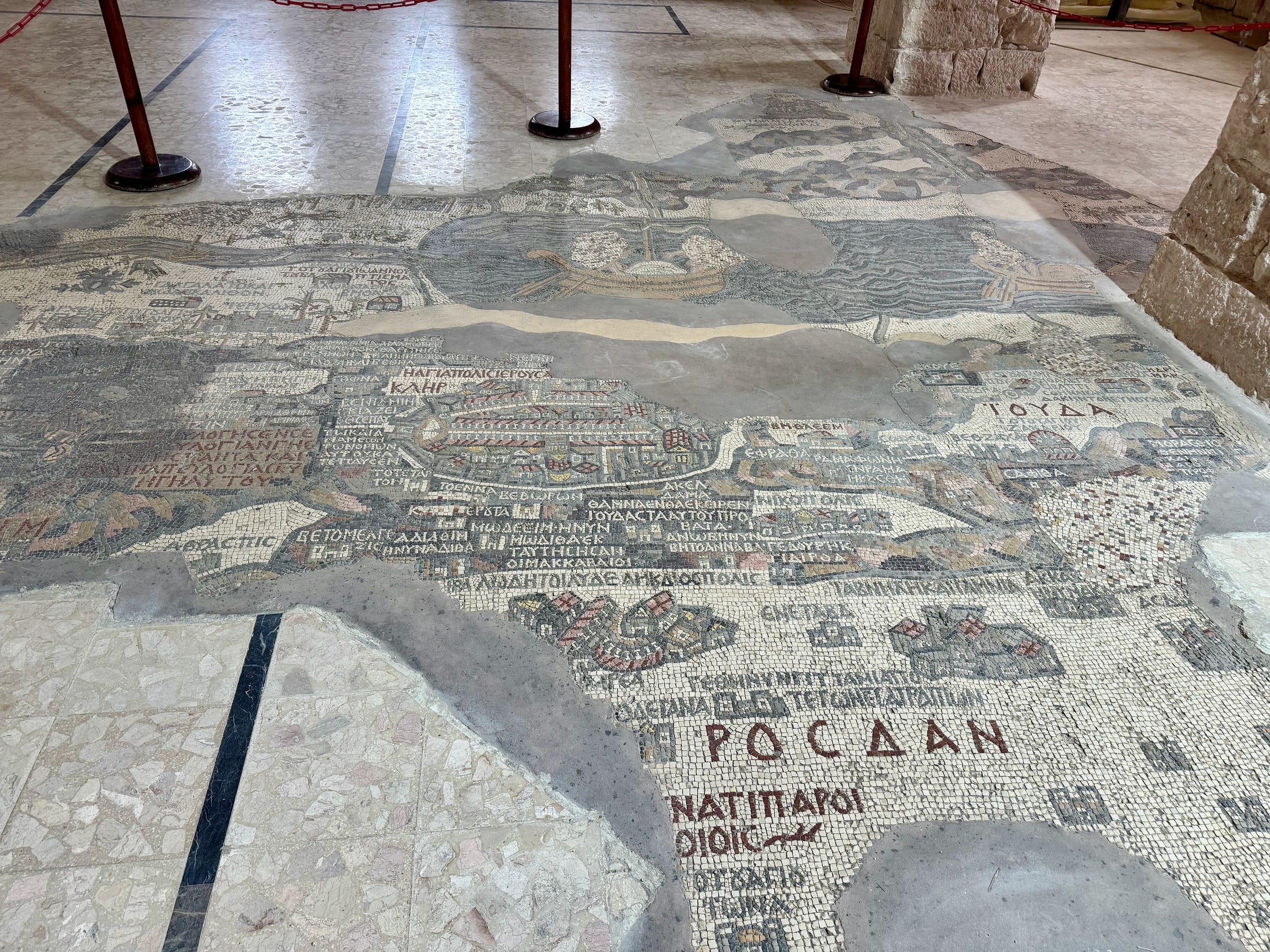A Glimmer of Hope and Beauty
Jordan's ancient mosaics, leaning into goodness, and an original poem
Hi friends,
It is COLD here in Amman. We had a hail storm last week, enough to leave ice on the ground for a couple hours after it passed. Suddenly it feels like winter has arrived. I’m mourning the end of our beautiful autumn—but on the bright side, winter means citrus season. The lemons in my garden are finally turning from green to yellow, and I’m going to try my hand at making them into preserves. I also can’t wait to sit outside in the chill and eat pumpkin soup with olive oil and cream. How is it where you are?
In this week’s letter, I’ll virtually transport you to a lesser-known archaeological site in Jordan (it’s a feast for the eyes) and share an original poem for your reading pleasure. But first, I want to talk a bit about the fallout from last week’s presidential election and what it means for this community.
I’m not here to dissect the results—this is not a partisan newsletter nor one focused on American politics, and it isn’t going to become one—but when I shared my anxiousness in the run-up to election day, it clearly struck a chord. I know many of us are feeling scared and let down.
My gut tells me this moment requires us to lean hard into our humanity, to cling to every sliver of goodness. In fact, that seems urgent. When the world feels like it’s fueled by fear and rage, choosing hope and compassion becomes an act of resistance. So that’s exactly what I plan to do. And I’m going to be relentless about it.
You’re going to see that relentlessness here. I’m doubling down on making Caravanserai a space for reflection, inspiration, wonder, and adventure. I think we need independent creators now more than ever to add depth and vulnerability to a media landscape that feels shouty at best, and caustic at worst.
I want you to come to this corner of the internet and, even if only for a moment, feel that melt away. I want this newsletter to shore up your soul.
So with that, onto the first course of our weekly soul food: the ancient mosaics of Madaba.
the mosaics of Madaba
The city of Madaba lies just a short drive outside of Amman, straight down the highway to the southwest. It’s an unassuming place that outwardly looks no different from any other provincial town, but if you look a little harder, you’ll see it holds a sort of buried treasure: a trove of well-preserved mosaics well over a thousand years old.
I visited in late April with my husband and a few friends, and we sat outside to eat lunch at a family restaurant and enjoy the warm weather. We were surrounded by shops selling everything from classic oriental antiques to kilims to cheap Jordanian keffiyehs—and, of course, modern mosaics assembled from stone squares, the analog equivalent of individual pixels—yet the streets seemed devoid of life. As we munched our dolma and mujaddara, you could have heard a pin drop. It seemed we were the only visitors there.
Madaba is one of the less-traveled stops on Jordan’s touristic path—with Petra and Wadi Rum competing for space on itineraries, it doesn’t always make the cut. And while I wasn’t sorry we had Madaba to ourselves, it’s a shame that more people don’t go. The city is like a sprawling archaeological site with gems peppered throughout, hidden behind unassuming doors, just waiting to be stumbled upon.
How did Madaba come to be this center of ancient mosaic art? The settlement dates to the Middle Bronze Age, when it was a Moabite stronghold, but it truly flourished under the Byzantine Empire, for whom mosaics were a popular religious and secular art form. Madaba was a wealthy Christian bishopric during the Byzantine era, and its churches and residents commissioned impressive mosaic works, many of which survive to this day. The city was conquered by the Rashidun Caliphate (subsequently the Umayyads) in the mid-7th century, then abandoned after an earthquake in 746. Its famed mosaics lay undiscovered until it was resettled by Arab Christians in the 1880s.
Imagine breaking ground on a kitchen renovation only to find a priceless work of art from antiquity hiding under your floor—because that’s exactly what happened to many of Madaba’s new residents. The historical value of the finds quickly became apparent, and excavations are still ongoing.
The city’s biggest attraction is what’s known as the Madaba Map, a 6th century mosaic set into the floor of the Greek Orthodox Basilica of St. George. It is thought to be the oldest surviving cartographic depiction of the Holy Land, and while the mosaicist is unknown, it was, in all likelihood, a member of Madaba’s ancient Christian community.
As the Madaba Map was completed long before the advent of modern cartography, it is not to scale. And interestingly, the map is oriented east to coincide with real-world compass directions—so when you stand at the foot of the map and look down at Jerusalem, you are also facing Jerusalem in the real world, giving you the feeling that you are transcending space and soaring over the Holy Land.









